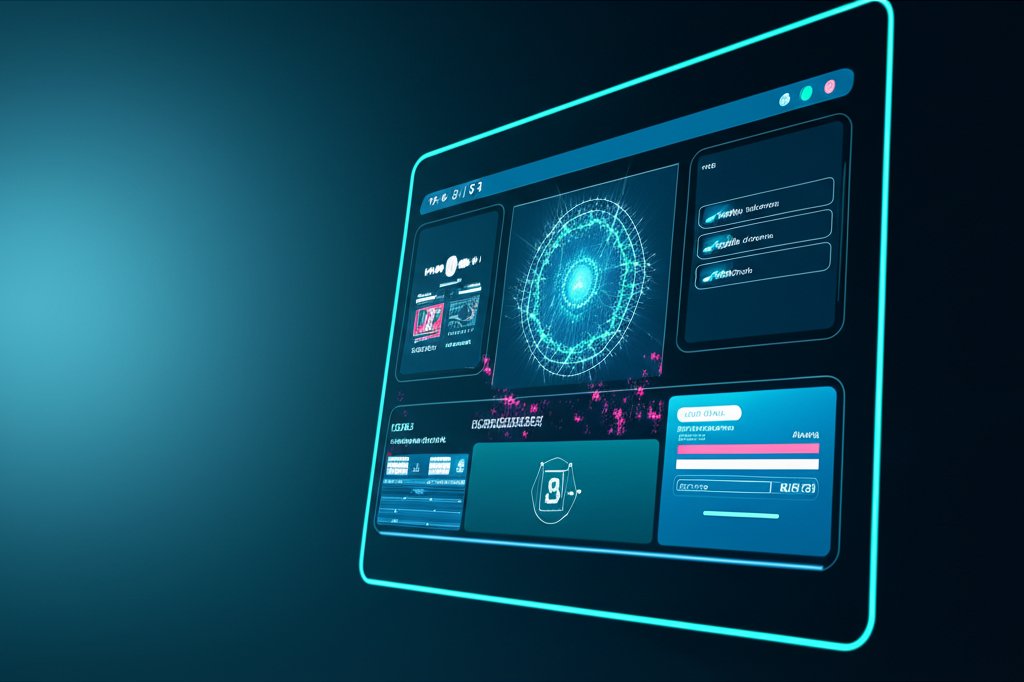In today’s interconnected digital landscape, securing your business is no longer merely an option; it’s a fundamental requirement for survival and growth. We’ve all seen the headlines and heard the stories: devastating data breaches, paralyzing ransomware attacks, and stolen credentials that compromise entire organizations. The cyber threats are relentless and constantly evolving, often leaving businesses feeling vulnerable.
But what if there was a way to fortify your organization’s defenses so effectively that your security posture itself becomes your strongest strategic advantage? This is the promise of Zero-Trust Identity. It’s far more than just a trending buzzword; it represents a profound paradigm shift in how we approach digital security, empowering businesses of all sizes, especially small and medium-sized enterprises, to build resilience against even the most sophisticated cyberattacks.
You might be thinking, “Is this another overly complex IT concept that will be impossible to understand or implement?” My answer, as a security professional, is a resounding no. My mission is to demystify these powerful strategies, translating them into clear, practical, and actionable steps that you can implement. Together, we will explore the true meaning of Zero-Trust Identity, uncover why it’s an absolute game-changer for businesses like yours, and outline precisely how you can begin constructing this robust shield, even if you operate without a massive IT department or an unlimited budget. Let’s take control of your digital security and build a more secure future, starting today.
Table of Contents
- What is Zero-Trust Identity, and why should my small business care?
- How is Zero-Trust Identity different from traditional security?
- Why is "identity" so central to Zero-Trust security?
- Does Zero-Trust Identity mean I’ll have to log in constantly?
- How can Zero-Trust Identity protect my business from common cyber threats like phishing and ransomware?
- What are the first practical steps my small business can take to implement Zero-Trust Identity?
- How does Zero-Trust Identity secure my remote or hybrid workforce?
- Can Zero-Trust Identity help minimize insider threats in my organization?
- What does "Least Privilege" mean in a Zero-Trust Identity context, and how do I apply it?
- How can I ensure every device accessing my data is "trusted" in a Zero-Trust model?
- Is Zero-Trust Identity only for large corporations with big IT budgets?
- What role do Identity and Access Management (IAM) tools play in Zero-Trust Identity for small businesses?
Frequently Asked Questions
What is Zero-Trust Identity, and why should my small business care?
At its core, Zero-Trust Identity is a modern security framework built on one fundamental principle: “never trust, always verify.” This means that absolutely no user, device, application, or service—whether it’s inside your traditional network perimeter or outside it—is inherently trusted. Every single access attempt, without exception, must be rigorously authenticated and explicitly authorized before access is granted.
Your small business should care deeply about Zero-Trust Identity because it fundamentally redefines your security posture. By making identity the new security perimeter, it drastically reduces your organization’s vulnerability to sophisticated data breaches, ransomware attacks, and credential theft. Traditional security models, often likened to a “castle and moat” where everything inside the network is trusted, are simply no match for today’s advanced threats, which frequently bypass these perimeters. Zero-Trust Identity ensures that even if an attacker manages to breach one segment of your system, they are immediately prevented from moving laterally to other critical areas. It’s a proactive, resilient defense that safeguards your sensitive data and customer information, which is paramount for maintaining customer trust and adhering to evolving compliance requirements.
[Insert Infographic: Core Principles of Zero-Trust Identity: Verify Explicitly, Use Least Privilege, Assume Breach]
How is Zero-Trust Identity different from traditional security?
The distinction between Zero-Trust Identity and traditional security is profound and critical for understanding modern cyber defense. Traditional security, born in an era of static perimeters, operates on a “hard shell, soft interior” model. It assumes that once a user or device successfully breaches the external firewall (the “castle walls”), everything inside the network is largely safe and trusted. This “trust, but verify” approach is woefully inadequate for today’s distributed and cloud-centric environments.
Zero-Trust Identity, by contrast, flips this model on its head. It operates on the unwavering assumption that breaches are inevitable and that no entity can be trusted by default. Instead of protecting a perimeter, it verifies every single access request as if it originates from an untrusted, external network, regardless of its actual location. Imagine it not as a castle with a moat, but as a series of individually locked and guarded rooms, where every entry requires a unique key and permission check.
This means that in the old model, if a hacker compromises an employee’s laptop and bypasses the firewall, they could often move laterally across your network, accessing sensitive systems and data with relative ease. With Zero-Trust, every user, every device, and every application must continuously prove its identity and authorization for each specific access request. This continuous, explicit verification transforms your security posture, making your business vastly more resilient against modern threats like ransomware and credential theft that expertly exploit the inherent weaknesses of traditional perimeter-based security.
[Insert Diagram: Visual Comparison of Traditional Perimeter Security vs. Zero-Trust Security]
Why is "identity" so central to Zero-Trust security?
Identity is absolutely central to Zero-Trust security because in today’s environment, it’s no longer sufficient to simply secure your network infrastructure. With remote work, cloud services, and mobile devices blurring traditional network boundaries, the actual perimeter has dissolved. What truly needs securing is who and what is accessing your valuable resources, regardless of their physical location or network connection. In a Zero-Trust model, the user or device identity becomes the primary control plane for all access decisions, effectively making identity your new security perimeter.
Every interaction within your digital ecosystem—whether it’s an employee opening a sensitive document, a contractor logging into a project management tool, or even an automated application requesting data from a cloud service—begins with a rigorous verification of their identity. This verification process isn’t just about a username and password; it often includes confirming who they are, validating the security posture and compliance of the device they’re using, and assessing the context of their request (e.g., location, time, resource being accessed). This granular, identity-centric control is an incredibly powerful mechanism for protecting your data and systems, especially as traditional network boundaries become increasingly irrelevant. It builds significant confidence and enhances your overall security governance.
Does Zero-Trust Identity mean I’ll have to log in constantly?
This is a common and understandable concern, but the answer is no, not necessarily. While Zero-Trust Identity rigorously emphasizes continuous verification, modern security solutions are designed to enhance security without creating constant user friction or login fatigue. They achieve this through intelligent technologies like Single Sign-On (SSO), adaptive authentication, and contextual access policies.
Consider this: if you’re an employee working from a trusted, company-managed device within your usual office location or home network, your access to applications might be seamlessly granted after an initial strong authentication. The system “remembers” your trusted context. However, if you attempt to access highly sensitive financial data from an unknown personal device while connected to public Wi-Fi in a different country, the system would likely recognize this as an elevated risk and prompt for re-verification, perhaps through Multi-Factor Authentication (MFA) or by challenging specific details. It’s about being smart, context-aware, and dynamic with security, rather than blindly interrupting your workflow. Effective Zero-Trust implementation actually strives to make security largely invisible until it’s genuinely needed, aiming for a balance between robust protection and a smooth user experience.
How can Zero-Trust Identity protect my business from common cyber threats like phishing and ransomware?
Zero-Trust Identity significantly fortifies your defenses against prevalent cyber threats like phishing and ransomware by implementing stringent authentication and access controls, making it exponentially harder for attackers to gain a foothold or move undetected through your systems, even if they manage to steal credentials.
- Against Phishing and Credential Theft: The cornerstone of Zero-Trust’s defense here is Multi-Factor Authentication (MFA). If an employee unfortunately falls victim to a phishing scam and inadvertently provides their password, Zero-Trust’s requirement for continuous verification and, crucially, MFA, will prevent the attacker from simply logging in. They would still need a second verification factor, such as a code from a registered mobile app, a physical security key, or a biometrics scan. This significantly elevates the bar for attackers.
- Against Ransomware: Even if an attacker somehow bypasses initial defenses (e.g., through a zero-day exploit) and gains access to one user’s account, Zero-Trust’s principle of “least privilege” access dramatically contains the potential damage. An attacker will find their ability to access critical systems, deploy ransomware across the network, or exfiltrate sensitive data severely limited. Their initial access point will not grant them free reign. This proactive containment strategy is essential for robust cloud security for small businesses and minimizing the blast radius of any successful intrusion.
By treating every access request as potentially malicious until proven otherwise, Zero-Trust forces attackers to overcome multiple, individualized security hurdles, making their operations far more difficult, time-consuming, and detectable.
What are the first practical steps my small business can take to implement Zero-Trust Identity?
Implementing Zero-Trust Identity doesn’t have to be a daunting, “big bang” overhaul. For small businesses, it’s about taking strategic, incremental steps that yield immediate security benefits and lay a solid foundation. Here are the first practical actions you can take:
- Implement Multi-Factor Authentication (MFA) Everywhere: This is arguably the single most impactful and cost-effective step. Require MFA for all user accounts, especially for email, cloud services (like Microsoft 365, Google Workspace), VPNs, and any critical business applications. This alone stops the vast majority of credential stuffing and phishing attacks.
- Enforce Strong Password Practices and Consider a Password Manager: While MFA is critical, strong, unique passwords still matter. Implement a policy requiring complex passwords that are changed periodically, or even better, encourage or mandate the use of a reputable password manager for all employees. This helps prevent password reuse and credential theft.
- Start with “Least Privilege” for Your Most Critical Assets: Begin by identifying your most sensitive data, applications, and systems. Then, review who has access to them. The goal is to limit access to the absolute bare minimum required for each individual’s job function. For example, your marketing team likely doesn’t need access to financial records. This can be a manual process to start, focusing on reducing unnecessary permissions for administrative accounts and critical data shares.
- Inventory Your Digital Assets and Users: You can’t protect what you don’t know you have. Create a simple inventory of all users (employees, contractors), devices (company-owned, personal-used-for-work), applications, and data stores. This helps you understand your attack surface and prioritize where to apply Zero-Trust principles.
You don’t need to overhaul your entire IT infrastructure overnight. Zero-Trust can and should be adopted in phases, starting with your most critical assets and accounts. Small, consistent steps build powerful security foundations.
How does Zero-Trust Identity secure my remote or hybrid workforce?
Zero-Trust Identity is exceptionally well-suited for securing today’s remote and hybrid workforces, precisely because it eliminates the antiquated assumption of trust based on network location. In a world where employees access critical resources from homes, coffee shops, or co-working spaces, the traditional network perimeter simply no longer exists. Zero-Trust verifies every user and device, no matter their physical location, ensuring secure and controlled access from anywhere.
For your remote team, Zero-Trust means a multi-faceted verification process for every access attempt:
- Identity Verification: First and foremost, the system confirms the user’s identity through strong authentication, typically involving MFA.
- Device Health Check: The system simultaneously checks the “health” or “posture” of the device being used. Is the operating system up-to-date? Is antivirus software active and current? Is the device free of malware or suspicious configurations?
- Contextual Authorization: Based on the verified identity, device posture, and other contextual factors (like location, time of day, and the specific resource being requested), the system then makes a real-time authorization decision.
This comprehensive verification ensures that whether an employee is in the office, working from their kitchen table, or traveling, your sensitive data remains protected. It effectively extends your security perimeter to every individual user and device, transforming remote work from a potential security vulnerability into an inherently more secure operational model.
[Insert Flowchart: Zero-Trust Access Workflow for a Remote User]
Can Zero-Trust Identity help minimize insider threats in my organization?
Yes, absolutely. Zero-Trust Identity is an incredibly effective strategy for significantly minimizing insider threats, whether those threats are accidental errors or malicious intent. It achieves this by rigorously enforcing the “least privilege” principle, ensuring that even ostensibly “trusted” employees or contractors only have access to the absolute minimum necessary to perform their specific job functions.
By strictly limiting access, you dramatically reduce the potential damage an insider can inflict. An employee who makes an innocent mistake, or a disgruntled employee attempting to exfiltrate data, will find their reach confined to only what their legitimate role requires. This severely curtailing their ability to access or compromise unrelated sensitive systems. Furthermore, a robust Zero-Trust framework often incorporates continuous monitoring of user behavior. If an employee’s account suddenly exhibits unusual access patterns—like attempting to access data outside their usual scope or at odd hours—the Zero-Trust system can automatically flag this activity, challenge their identity with re-authentication, or even temporarily revoke access until the anomaly is investigated. This granular control and real-time responsiveness provide immense peace of mind and significantly strengthen your overall security framework against internal risks.
What does "Least Privilege" mean in a Zero-Trust Identity context, and how do I apply it?
The principle of "Least Privilege" means granting users, applications, or systems only the minimum level of access permissions required to perform their specific tasks, and absolutely nothing more. In a Zero-Trust Identity context, this principle is applied with unwavering rigor and is often enforced continuously, ensuring that no one holds excessive, unnecessary permissions. Applying it effectively involves systematic review and restriction of access roles.
Here’s how you can apply it:
- Audit Existing Permissions: Begin by auditing all current user and group permissions across your systems, cloud services, and file shares. You’ll likely find many users have more access than they actually need.
- Define Roles and Responsibilities: Clearly define what access each role (e.g., “Marketing Specialist,” “Finance Clerk,” “IT Support”) genuinely requires. A marketing employee, for instance, has no business accessing your company’s financial records, and a temporary contractor should only have access to the specific project files they’re working on, not your entire internal network.
- Implement “Just-in-Time” (JIT) Access: For highly sensitive tasks or administrative functions, consider implementing JIT access. This means elevated permissions are granted only for a limited, predefined period when a sensitive task needs to be performed, and then automatically revoked once the task is complete or the time expires. This drastically reduces the window of opportunity for attackers to exploit elevated privileges.
- Regularly Review and Recertify Access: Access needs change as employees shift roles or leave the company. Conduct regular (e.g., quarterly or semi-annual) reviews of all user access to ensure permissions remain appropriate and revoke any unnecessary access immediately.
Implementing least privilege drastically reduces your overall attack surface and significantly limits the potential for lateral movement by attackers who might compromise an account. It’s a foundational element of a strong Zero-Trust posture.
How can I ensure every device accessing my data is "trusted" in a Zero-Trust model?
In a Zero-Trust model, trusting a device is not about its physical location, but about its "device posture"—its overall health, security configuration, and compliance with your organization’s security policies. To ensure every device accessing your data is “trusted,” you need to verify this posture rigorously before granting access, and continuously thereafter.
This verification process typically involves checking for several critical factors:
- Up-to-date Operating System and Patches: Is the device running the latest security updates and patches? Outdated software is a prime vulnerability.
- Active and Updated Antivirus/Anti-Malware: Is endpoint protection installed, active, and regularly updated?
- Proper Security Configurations: Is the firewall enabled? Is disk encryption active? Are there any unauthorized applications or suspicious configurations?
- Device Compliance: Is the device managed by your organization (e.g., through Mobile Device Management/MDM or Endpoint Detection and Response/EDR solutions)? Is it free from jailbreaking or rooting, which compromise security?
This entire process is often automated through modern endpoint management tools (like Microsoft Intune, Google Endpoint Management, or various EDR solutions), even for small businesses. If a device doesn’t meet your predefined security standards—for example, if it’s missing critical updates or is detected to have malware—it will either be denied access entirely, or its access will be limited to non-sensitive resources until the security issues are remediated. This rigorous approach ensures that it’s not just about who you are, but also what you’re using to connect, providing another critical layer of security and trust.
Is Zero-Trust Identity only for large corporations with big IT budgets?
Absolutely not! While Zero-Trust principles were initially championed and popularized by large enterprises with vast resources, its core tenets are inherently scalable and immensely beneficial for businesses of all sizes, including small and medium-sized enterprises (SMEs). The misconception that Zero-Trust is only for the “big players” often prevents smaller organizations from adopting practices that would dramatically improve their security.
You do not need a massive budget, a dedicated security team, or an extensive IT department to begin implementing Zero-Trust Identity. In fact, many of the foundational elements are already accessible or can be integrated into your existing workflows with minimal investment. Small businesses can and should adopt Zero-Trust by leveraging existing cloud services and tools they likely already use and by taking a phased, pragmatic approach:
- Start with the Basics: As discussed, implement strong Multi-Factor Authentication (MFA) across all services. This is a powerful, low-cost Zero-Trust enabler.
- Leverage Cloud Provider Features: Many cloud services (e.g., Microsoft 365, Google Workspace, Salesforce) offer built-in Zero-Trust capabilities, such as conditional access policies, device compliance checks, and robust identity management, that you might already be paying for but not fully utilizing.
- Focus on Least Privilege: Begin by reducing excessive permissions, especially for administrative accounts and access to sensitive data. This is often more about policy and process than expensive technology.
- Gradual Implementation: Prioritize your most critical assets and implement Zero-Trust for those first, then expand incrementally. It’s about a mindset shift and gradual improvements, not an all-or-nothing, expensive overhaul.
Zero-Trust is a strategy, not a product. It’s about fundamentally changing how you think about security, making it accessible and achievable for businesses of any size.
What role do Identity and Access Management (IAM) tools play in Zero-Trust Identity for small businesses?
Identity and Access Management (IAM) tools play an absolutely crucial role in simplifying and operationalizing Zero-Trust Identity for small businesses. Essentially, they centralize and automate the “verify” part of “never trust, always verify,” making robust security manageable without a large dedicated security team.
For a small business, an effective IAM solution acts as your control center for digital identities. It provides a single, unified platform to:
- Centralize User Management: Manage all user accounts (employees, contractors) from one place, rather than disparate systems.
- Enforce Strong Authentication: Easily implement and manage Multi-Factor Authentication (MFA) across all integrated applications.
- Implement Least Privilege: Define and enforce granular access policies, ensuring users only access what they explicitly need.
- Integrate with Cloud Applications: Provide Single Sign-On (SSO) for all your cloud applications, improving user experience while maintaining strong security.
- Monitor and Audit Access: Track who accessed what, when, and from where, providing crucial data for security audits and incident response.
- Automate Provisioning/Deprovisioning: Automatically grant or revoke access rights when employees join, change roles, or leave, ensuring security is maintained throughout the employee lifecycle.
Instead of struggling to manage logins and permissions across dozens of different services manually, an IAM tool streamlines the entire process, making it significantly easier for small businesses to maintain a strong and consistent Zero-Trust posture. It truly simplifies the complexity of robust identity management, allowing you to focus on your core business.
Related Questions
- What are the benefits of continuous monitoring in a Zero-Trust Identity framework?
- How does Zero-Trust Identity handle non-human identities like service accounts or IoT devices?
- Can Zero-Trust Identity improve my business’s compliance with data protection regulations?
- What are some common challenges small businesses face when adopting Zero-Trust, and how can they overcome them?
Your Path to a Stronger, Identity-Centric Security Posture
Adopting Zero-Trust Identity isn’t about introducing more obstacles or making your work harder; it’s about proactively building a smarter, more resilient security model that works tirelessly for you. By consciously shifting your focus from defending a static network perimeter to continuously verifying every identity and rigorously authorizing every access request, you are constructing the strongest possible layer of defense for your organization’s most valuable assets.
This is a proactive and adaptive stance that not only protects you against the constantly evolving landscape of cyber threats but also empowers your business to operate with greater confidence and agility, safeguarding your data, your reputation, and your customers. Don’t allow the technical jargon to intimidate you. Even small, incremental steps taken consistently can make a monumental difference in your security posture.
Take action today to protect your digital life and your business:
- Implement a reputable password manager: Ensure every employee uses unique, strong passwords for all accounts.
- Enable Multi-Factor Authentication (MFA) everywhere possible: This is the single most effective barrier against unauthorized access.
- Start small with “Least Privilege”: Identify your most critical data and begin limiting access to only those who absolutely need it.
These foundational actions are not just recommendations; they are the bedrock of a robust Zero-Trust Identity strategy for your business, empowering you to take definitive control of your digital security. For further resources and guidance on specific Zero-Trust implementation strategies, contact our security experts today.









